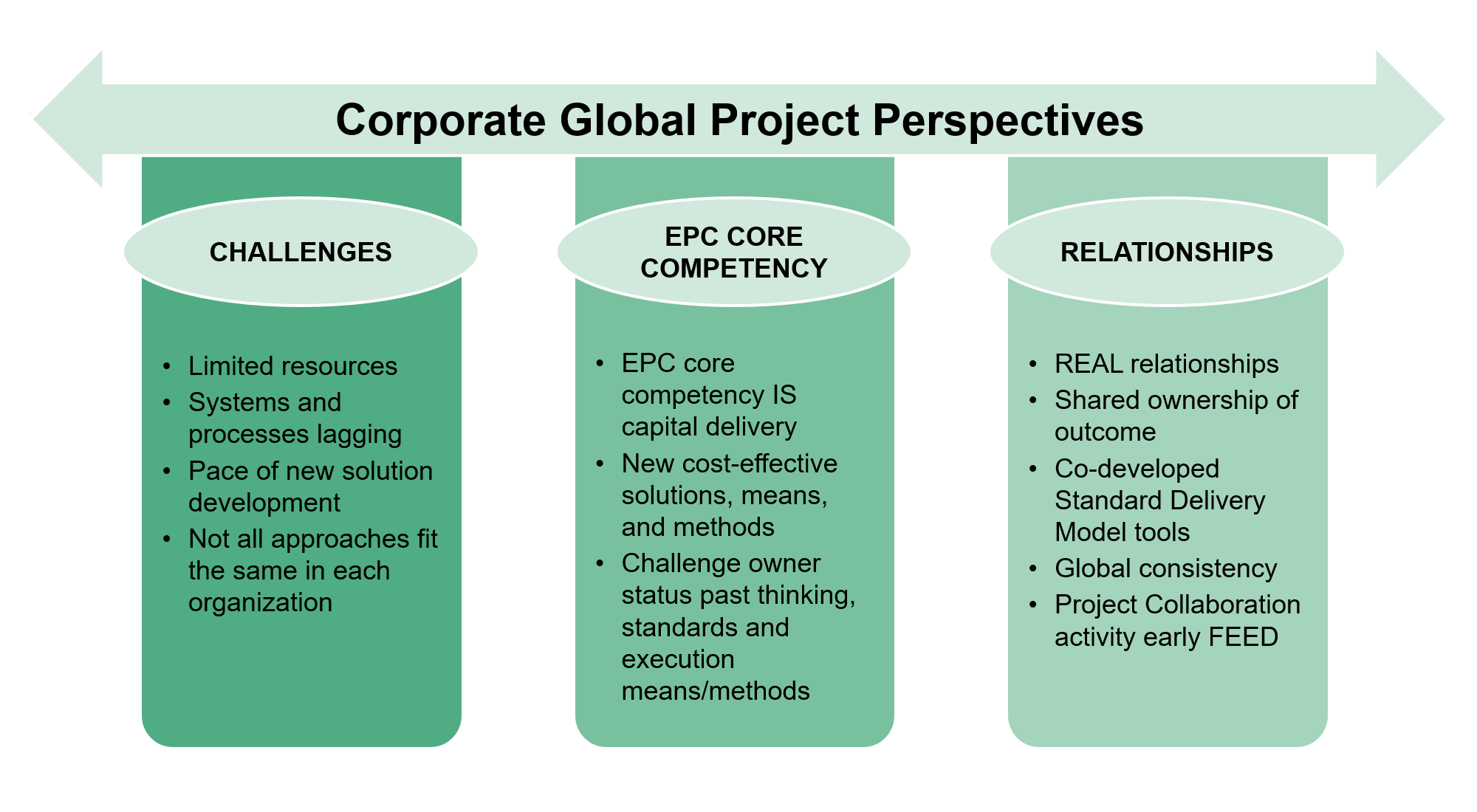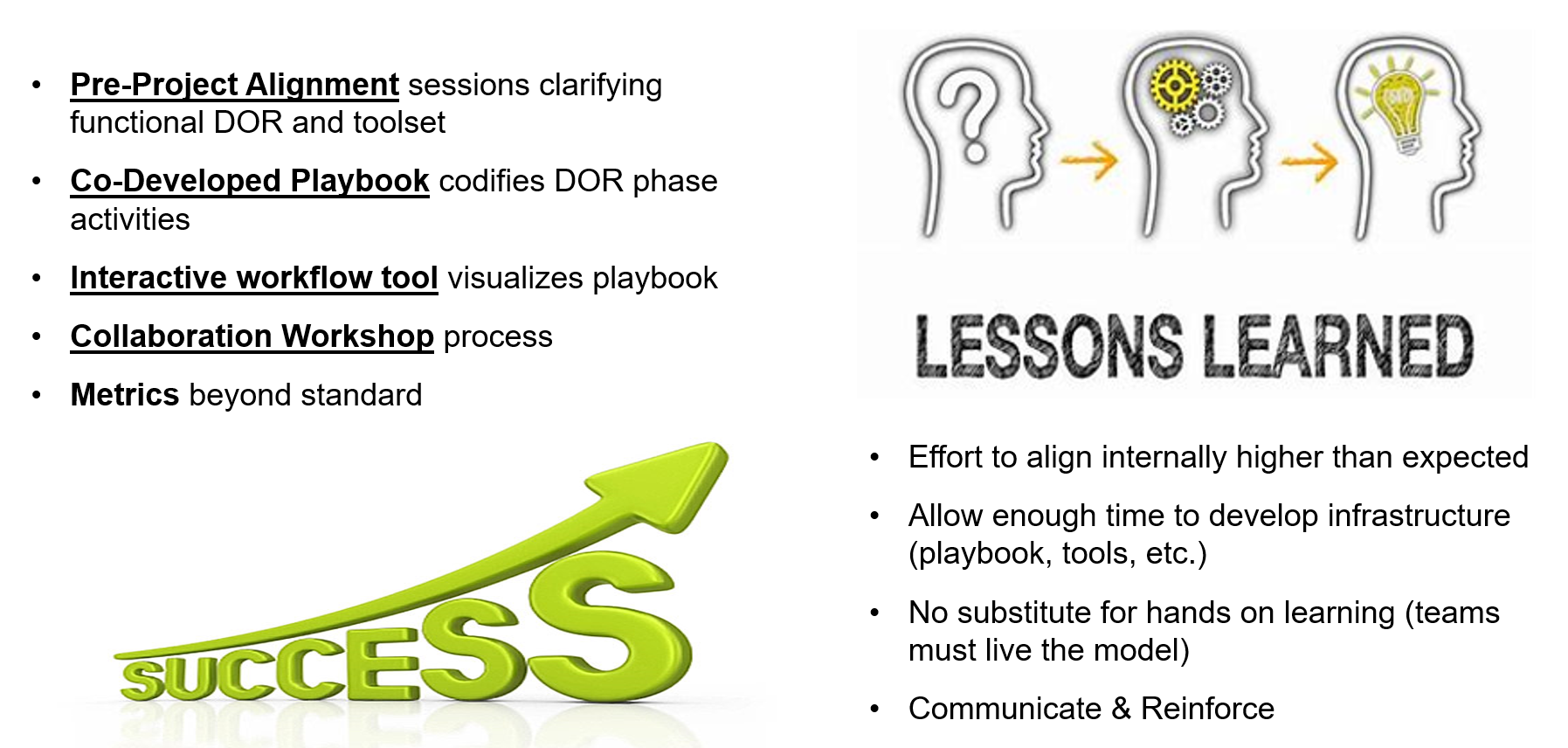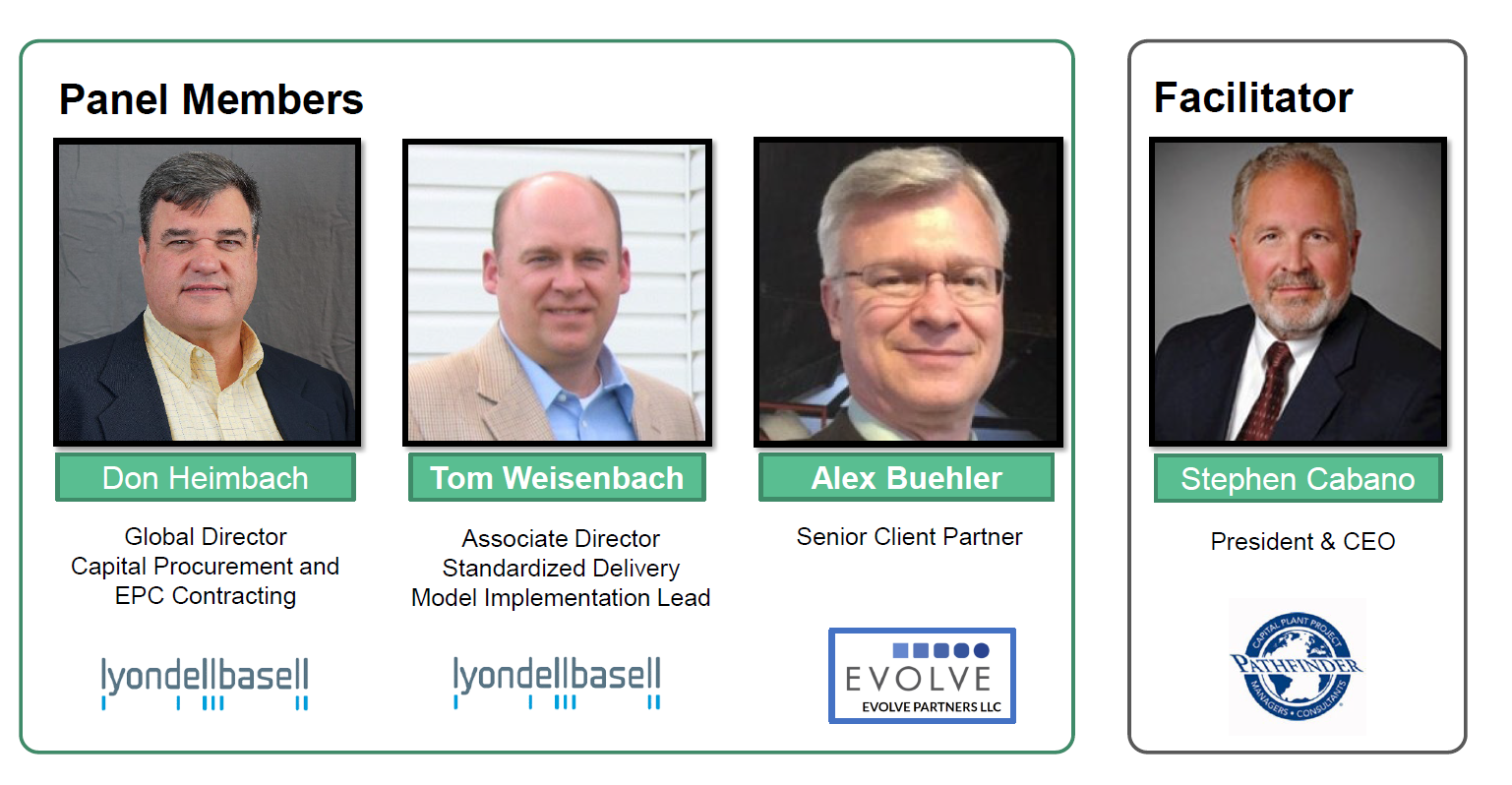Even before the two years of disruption caused by pandemic lockdowns, the engineering and construction industry was already plagued by strong headwinds, putting pressure on capital execution organizations to deliver predictable project results despite human resource depletion and supply chain dynamics. Market factors put Lyondellbasell in a position where we needed to rely even more on our contractor’s expertise. This required a shift in mindset regarding how to more effectively utilize contractors and how to better manage strategic relationships.
In 2018, an external gap assessment of our Global Projects organization and processes indicated that in order to achieve more consistent and predictable project results, a different approach was necessary. A key recommendation was the shift to an EPCm strategy using Alliance Partners to execute our major project portfolio.

Figure 1: Capital Projects Industry Perspectives
Coming out of this gap assessment the Global Projects Leadership Team aligned on a Standardized Delivery Model (SDM) using EPCm Alliance Partners. Outside expertise was brought in from Evolve Partners LLC and Pathfinder LLC, to support the development and implementation process for LyondellBasell Global Projects.
The success of our new Standardized Delivery Model would be dependent upon a high level of engineering and scope definition, and construction would be performed by pre-approved, discipline-specific contractors, on lump-sum (or unit price) contracts, managed by the alliance partner, along with a new behavioral model enabling our project team members to move from hands-on control of execution to an oversight and assurance role as shown in Figure 2 below:

Figure 2: Standardized Delivery Model Attributes and Challenges
Systems and Tools Development
A critical step in the process was defining how the new SDM will fit into existing Corporate Project Management Processes (PMP), whereby the SDM fits under the Corporate PMP, and project teams continue to utilize existing guidelines and procedures, as depicted on the right-hand side of Figure 3, to support the model. We utilized the support of our outside resources to design and implement the new systems and tools required to transform our organization.

Figure 3: Standardized project delivery model as a subset of the PMP
Utilizing existing guidelines as a foundation, our team of internal functional subject matter experts, as well as our alliance partners, came together to determine the right level of detail associated with the activities and the division of responsibility between the owner team and alliance partners, to set up each project for success. Previous guidelines were heavily oriented to project development, engineering, and project management/governance activities, so additional content was necessary for functions like Project Controls, Contracts & Procurement, Construction Management, Set Up and Operational Readiness.
The result of this collaboration was the creation of a toolset for use by the organization to manage the standardized delivery model.
The first of these tools is the Standardized Delivery Model Playbook. It is an MS-Excel-based tool that is structured in a swim lane format for each project phase, across all the stakeholder functional areas of the project development and execution process, as shown in figure-4 below.

Figure 4: Screenshot of the Standardized Delivery Model Playbook
The SDM Playbook offers an easily viewable matrix of higher-level project activities and deliverables, which can be filtered by project phase and functional area. Each line in the Playbook directly links each project activity and deliverable to applicable “how to” guidelines maintained by the functional organizations. This tool is required to be used by each project team to define/confirm activities and DOR through all project phases. While Phase 3 is the default for sharing DOR with an alliance partner, with some minor modification the tool also works with early engagement of an alliance partner to perform project development tasks.
Implementation and Collaboration Management
Once the toolset was developed, implementation of the SDM became the next consideration for the initial projects being executed under the SDM. This is accomplished through a series of collaboration workshops (typically at start of FEL3 – but could be done earlier if justified, via early engagement of alliance partner on a project). During these collaboration workshops, the Owner team and the Alliance Partner team explore the facets of their working together in terms of project goals, roles & responsibilities, processes to be addressed, and the relationships which must be developed to successfully achieve the project deliverables.
This collaboration workshop process can be described as a “Dry-Run Simulation” of the project execution, typically starting with FEED to address the readiness of the two teams to work together, learning about the details of the Playbook tools and also applying the Division of Responsibility (DOR) to the team members to assign primary responsibility for the project tasks and deliverables. Depending on project size and complexity, these workshops are typically conducted over a 6-8 week time frame.

Figure 5: SDM Collaboration Workshop Outline
This new process took some adjustment on the part of both the owner team and alliance partner team resources, but soon started to pay dividends with teams seeing the value associated with the up-front alignment on objectives and establishing a collaboration framework for the project. It also needs to be customized to fit programs that might be performing work across many assets, instead of just one project at one site.

Figure 6: Successes and Lessons Learned
As the portfolio of projects being executed under the new standardized delivery model grows, our focus has shifted to the definition and implementation of a set of metrics at the functional and enterprise level that are used to analyze the health of our project processes and identify opportunities for improvement.
The journey to implement a sustainable approach to executing the standardized delivery model continues as a change management effort within our organization to ensure continued buy-in from our employees and contractors. Over time, as the project teams experience the benefits of the model, we expect the behaviors, and results, to become more institutionalized.
The material in this whitepaper was presented live at the Engineering, Construction & Contracting (ECC) Forum, on September 8th, 2022 in San Antonio. We want to thank all those who attended our work session and hope this brief summary is informational to those who could not attend our event in person.

Figure 7: Authors and ECC Conference Expert Panel Members
ABOUT THE AUTHOR

Alex is a Senior Client Partner with Evolve Partners, LLC and a long-time, colleague of Pathfinder, LLC. Alex is a s

